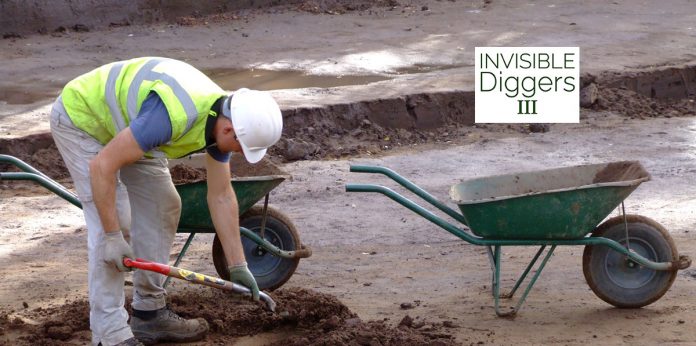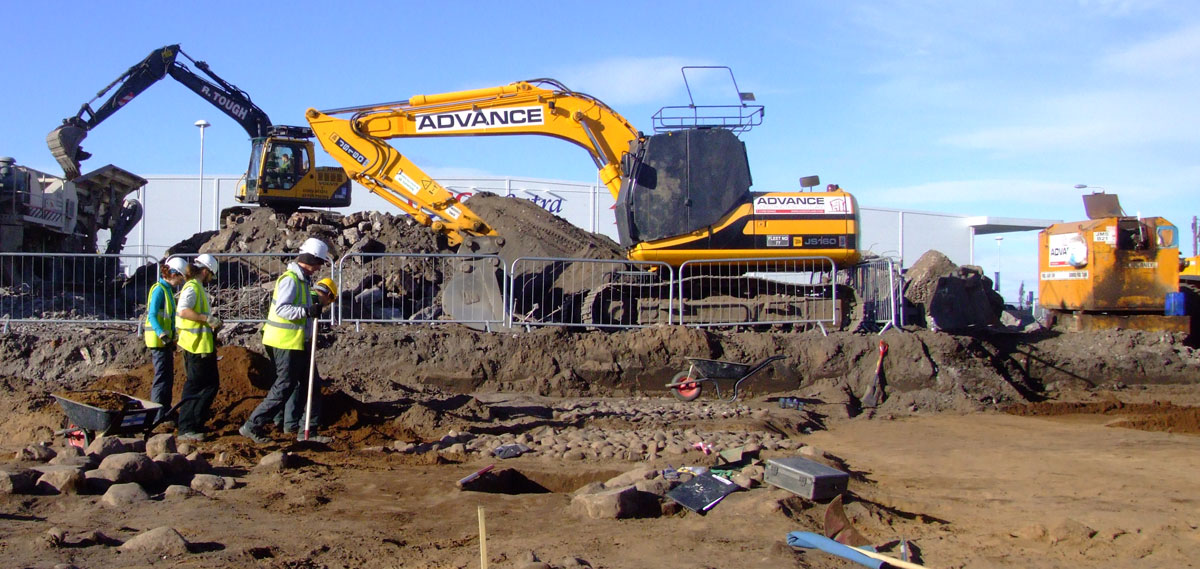by Paul Everill
The Invisible Diggers story began a little over 20 years ago, when I was working in developer-funded archaeology and felt, like many around me, disenfranchised, invisible, and inaudible.
Determined to have my voice heard I joined CIfA and Prospect (or IfA and IPMS as they were at the time of course) and in trying to make a difference, and be more visible, I became a union rep and later co-founded Diggers’ Forum with Chris and Jez. Although I was ultimately frustrated by the rate of progress, I had become particularly interested in the impact on individuals of commercial working practices, and the clear sense I had of people being driven away from something they loved by, most often, low wages and short-term contracts, but other factors too and I wanted to understand this process.
As a result, my PhD was probably more an ethnography – or sociological study – than it was a traditional archaeological thesis, and the core data for it was formed through the triangulation of a series of semi-structured interviews with UK commercial archaeologists; a lengthy ‘participant observation’ on site; and a quantitative survey designed to underpin both. Having finished my PhD in 2006, it was its publication in 2009 that helped transform the anecdotal understanding of aspects of commercial practice by providing data on individual views and experiences, particularly from the survey.
That first survey clearly demonstrated that the majority of new entrants were leaving the profession after 3-5 years; and that for many it wasn’t necessarily the pay that was driving them away but that, having fallen out of love with archaeology, they could no longer justify those earnings or job insecurity. A revised Second Edition was published as an eBook in 2012, however the main update was the data from a second survey earlier that year. Being undertaken as the sector was just starting to recover from the global financial crisis, the data showed, amongst other things, that the turnover of staff had slowed, and that, with very few new entrants, existing staff were more reluctant to leave their jobs and change career. In turn, it became apparent that peaks and troughs in employment could not only be mapped against UK economic events, but that they were still visible in the profession.
The third survey was planned for earlier this year but, like many things, it had to be postponed. While I had always intended to expand the survey to look more closely at training, CPD, and wellbeing, collecting data now also gives us the chance to capture a snapshot of UK archaeology at a crossroads. We can assess the impact of the pandemic on individuals in planning-led archaeology; and we can record the state of the profession before the end of the transition period of the UK’s withdrawal from the EU, and ahead of possible changes to the UK planning framework.
My hope is that the results of this survey can be published as an ID3 ‘expansion pack’ – a free to download update of the previous research so that the data can inform debate as widely as possible. There are lots of people in archaeology – in the field and in the office – who are skilled and talented, and love archaeology, but who feel invisible or inaudible. The project is named for them, but it also says that you don’t have to accept it.
Be visible; be heard.
Do the Invisible Diggers III survey here
https://winchester.onlinesurveys.ac.uk/id3


